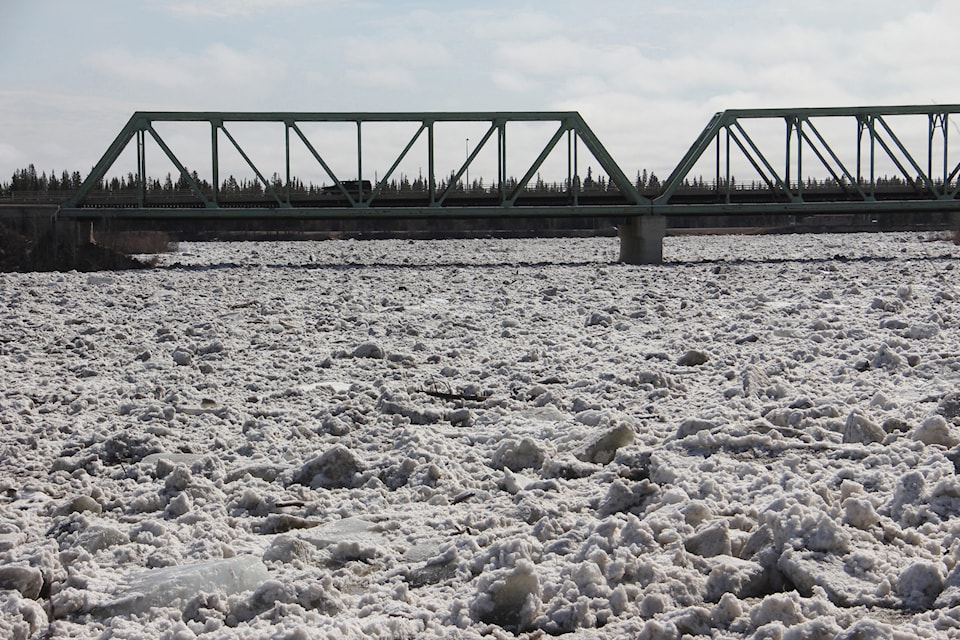Discussions and preparations are underway in advance of spring breakup of the Hay River, which usually happens in late April or early May.
Glenn Smith, the town's senior administrative officer, told the March 29 online meeting of council that there's a lot going on in preparing for breakup.
"But we're well prepared, especially coming out of last year and the challenges associated with accommodating, feeding, transporting both within the community here and the plans in case we had to evacuate to other communities," he said. "We're in good shape, but there's more information to come to really solidify the procedures."
Ross Potter, the town's director of protective services, updated council on the preparations so far in light of continuing high water in the river and on Great Slave Lake.
"As everybody is aware, we're kind of concerned about what may happen this year," Potter said. "There's an awful lot of effort that's already gone into getting prepared for what's going to be happening."
The water has been estimated to be two to three feet higher than normal.
"We have our ice thickness testing set up to be accomplished somewhere between April 9th and 16th, and the reason for those particular dates is so that our data follows through from year to year," noted Potter. "Otherwise, if you're not comparing apples to apples, it can get a little bit confusing as to what's going on with the ice."
A meeting of the local Emergency Measures Organization also took place on March 29.
"We were able to inform all the players as to what's been going on, how much we've accomplished so far, and what we are looking for in the future," said Potter.
Among many other things, the town has developed a communications plan for the news media and social media.
Potter said a monitoring crew is also in place to keep a watch on the river.
"I have approximately 15 people that are going to be doing monitoring for us this year," he said. "The greatest proportion of them are all trained, have been doing it for years. So we should be able to get a good flow of information coming from those people."
The Department of Infrastructure has been asked to take care of the highway delineators in areas that may possibly flood, and to have equipment available for clearing roads in areas such as Porritt Landing.
Potter has also talked to CN about their railcars.
"They will be storing their railcars on their property on the outside of town by the junction during any breakup activities," he said, referring to the junction of Highway 2 and Highway 5.
The Canadian Coast Guard Auxiliary has been asked to help in case a water rescue is required.
And the town is working on setting up an evacuation process and accommodations.
Potter said the town will be looking at private transportation, while the fire department will take care of anybody with mobility issues.
An RV camp will once again be set up this year.
"So we expect to see that starting to roll out towards the middle of April," said Potter.
The animal shelter will be involved in accommodating pets from evacuated areas.
Coun. Keith Dohey asked if conversations have taken place with the Office of the Chief Public Health Officer on evacuation accommodations in terms of continuing Covid-19 concerns.
"Basically, last year we were full in isolation and didn't really know where we were going with Covid and what that looked like," said Dohey. "I think obviously we're in a little better spot this time around. So I'm just wondering if some of those questions have been asked or requests made on how we'll go about an evacuation and where people can stay, and if we're going to have to be evacuating to Yellowknife again."
Smith said planning has started for registration and accommodations at an evacuation centre, along with people evacuated from Vale Island staying with family and friends.
The SAO noted that the Office of the Chief Public Health Officer and the GNWT is working on evacuation guidelines that will be used throughout the territories.
Smith said there are different scenarios for evacuation and accommodations, which vary depending on the Covid-19 situation at breakup.
